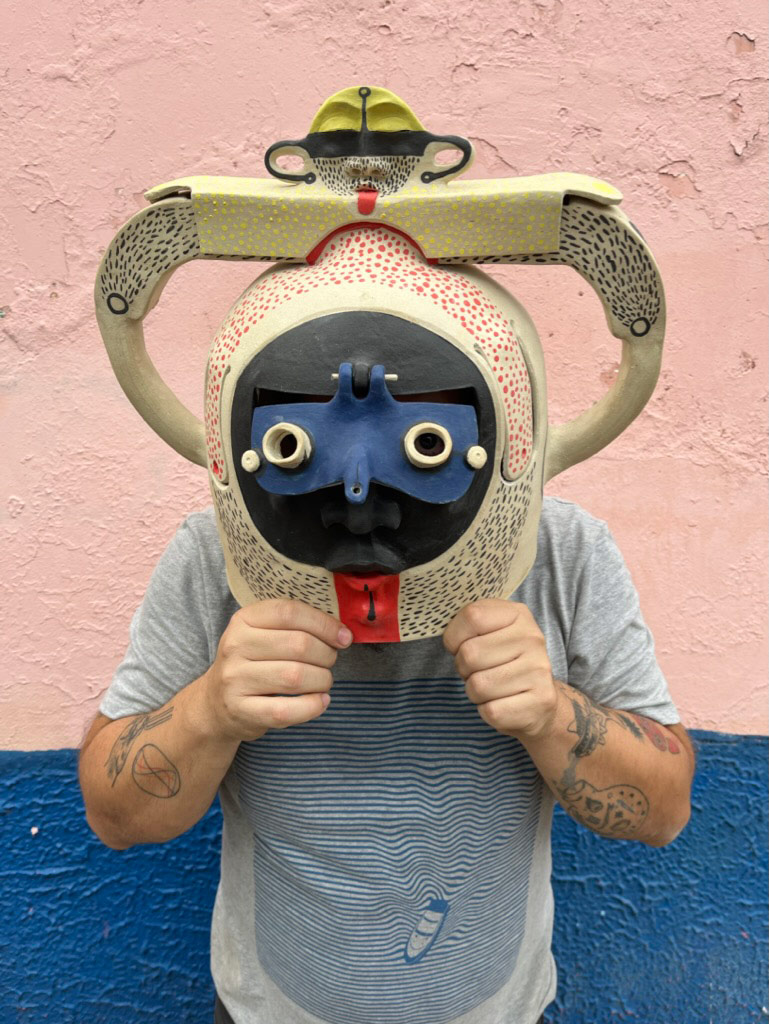
Images courtesy of Hernan Vargas and Vee Hua.
Interview originally conducted in Spanish and translated by Vee Hua, with additional consultation from Julián Zuluaga. English translation approved by Hernan Vargas prior to publishing.
On the table in the studio’s front room, one instrument, long and spherical, is immediately identifiable as a flute. Another is more difficult to discern and looks like a strange ceramic box with a handle; lift that handle, and one hears the splashing of water, which pushes through fired clay and expels air to create a strange beast of a hydraulic wind instrument. Still another instrument is an accordion with a ceramic exoskeleton, powered by a series of reeds inside.
When I enter the back room of the studio to interview Vargas, I find him working on the body of a guitar, still in its raw clay form. He is shaping it with a rounded tool as he watches YouTube videos an iPad. A week later, after I have departed from Oaxaca, the piece will be glazed with a white base and speckled with painted black droplets and blue accents, bringing it into the aesthetic universe of his other instrumental pieces.
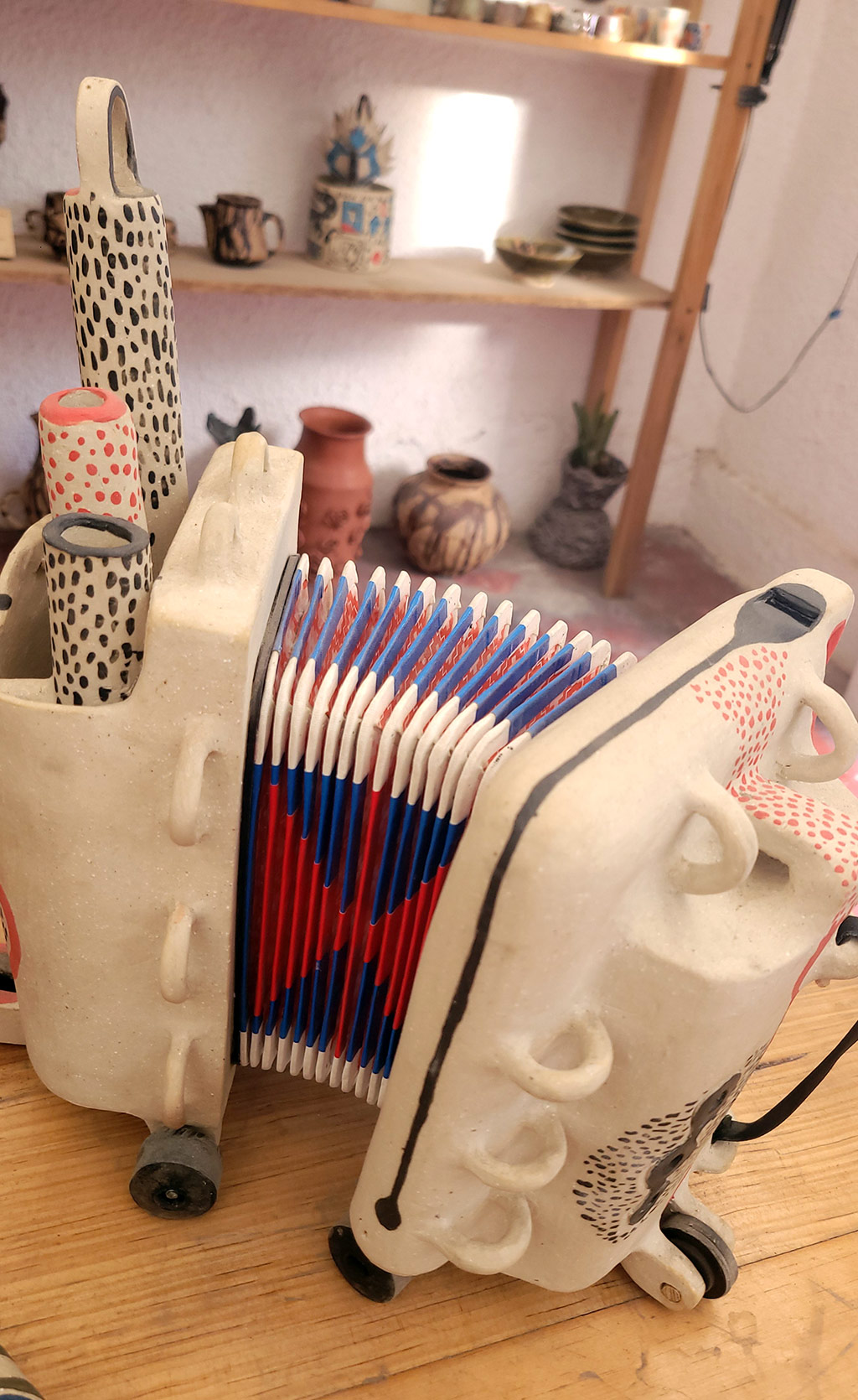
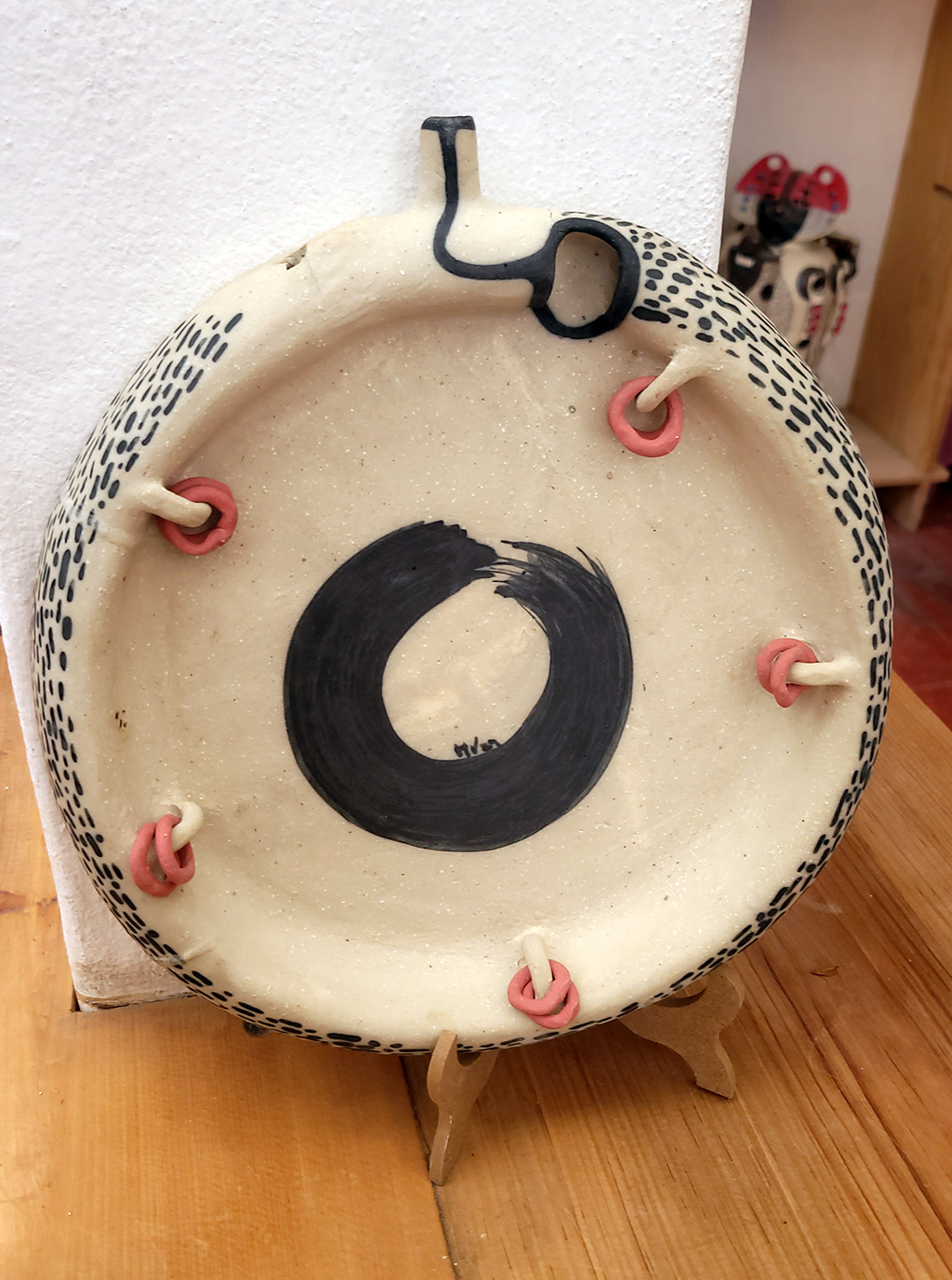
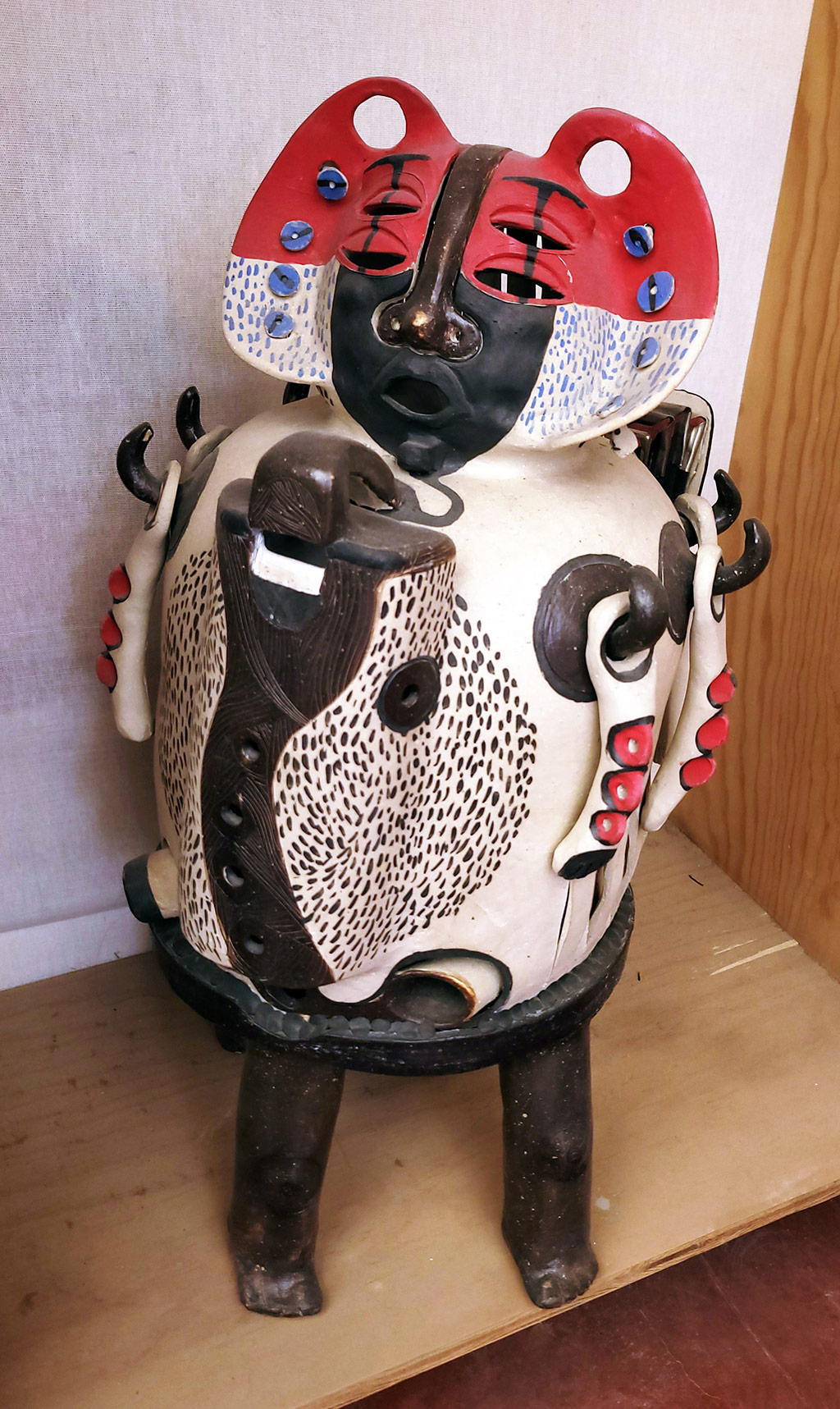
The Magical Powers of Barro
Vargas first began working in ceramics nearly two decades ago. Despite his love for the medium, it was not initially obvious what his contributions would be.
“Very shortly after starting with ceramics… I started to ask myself, ‘What do I want to do with [the medium]?'” Vargas explains. “And I was in a bit of a crisis, because I couldn’t figure out what I wanted to do, until the possibilities of [making] instruments appeared. It created a bridge between music and ceramics, and that was… super interesting to me.”
Vargas self-describes his work as an “investigation into the development and creation of ceramic instruments, sound sculptures, and the search for the connection between music, ceramics, sound, and what needs to be expressed.”
Influential to his early understandings was the work of a Brazilian project called Grupo Uirapuru. Consisting of dynamic rural artists who participate in many creative practices, Grupo Uirapuru also has an “orquestra de barro” — an orchestra consisting completely of ceramic instruments.
“At first, I only made percussion instruments, and over time, I started… making other instruments,” Vargas recalls. “I started making… for example, clay guitars, clay charangos… string violins, and then started on hydraulic instruments that operate with water, which were also based on ancient Mesoamerican pieces.”
Vargas explains that his work doesn’t directly pay homage to Mesoamerican cultures — or any specific culture, for that matter — but ceramics inherently hold a deep historical resonance. Ceramics have caught his attention in part due to the wonderful duality they hold and the “magical” qualities they possess.
“If you drop the [ceramic] piece on the floor, it breaks. But if it doesn’t fall to the floor, it’s a material that can last thousands of years, right?” says Vargas. “In fact, we reconstruct much of the history of ancient cultures here in Latin America through ceramics pieces, because ceramic and stone pieces are materials that persist over time. They are a timeless material.”
“They present a duality that is present in the fragility, as well as in the strength of the material,” he continues.
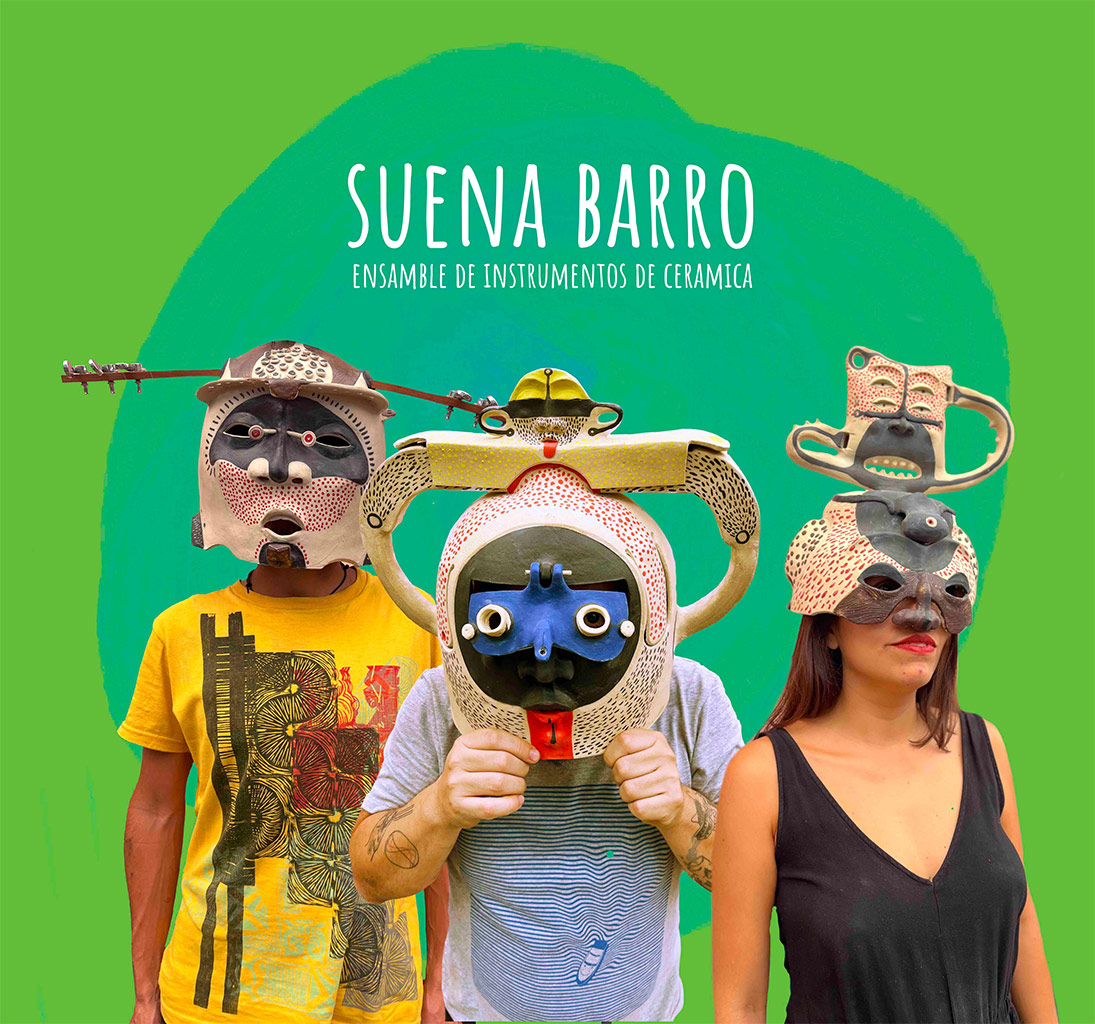
An Emergent Spirit of Creativity
Touchpoints from history, contemporary art, and a wide range of other influences may often find their way into Vargas’ work, but they are never copied in exact ways. Instead, all the influences mix together in his being and reemerge through an exploratory spirit of creativity.
“Everything I see and everything I investigate leaves a trace, right?” says Vargas. “[But] when you begin to develop pieces, design pieces, or create pieces, every point [of reference] becomes almost involuntary.”
The involuntary nature of creation is heightened by Vargas’ process. He rarely plans out his pieces in advance — instead, allowing himself to follow intuitive whims and impulses. This, of course, can sometimes lead to false starts or failures.
“With every piece, there is a learning of discovering the things that will work and even also the things that don’t work, because sometimes, I have planned something, and it might not work,” he explains. “But the fact that they don’t work is also a learning experience.”
Failure, then, is an acceptable byproduct of a creative process that very much centers the art of “play” and exploration.
“Every piece… emerges from a lot of play,” says Vargas. “The majority of the pieces are not designed beforehand. I make the piece, and along the way, I’m going to discover what the character looks like [and] the presence of the entity that emerges from the piece, right? It’s very playful.”
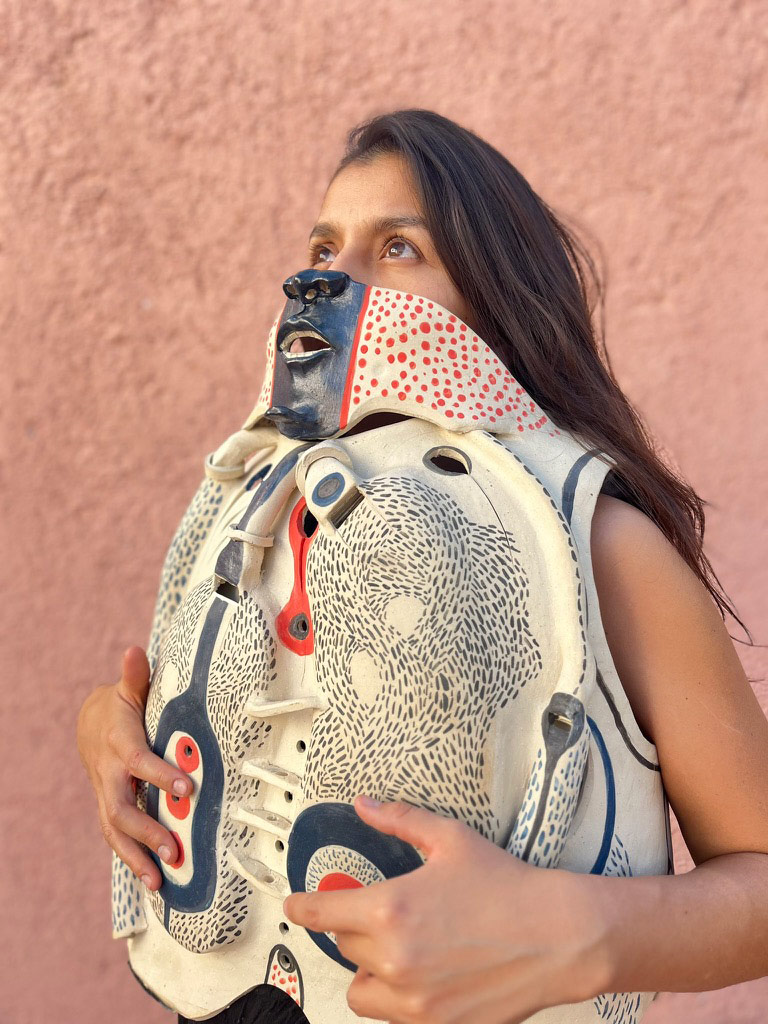
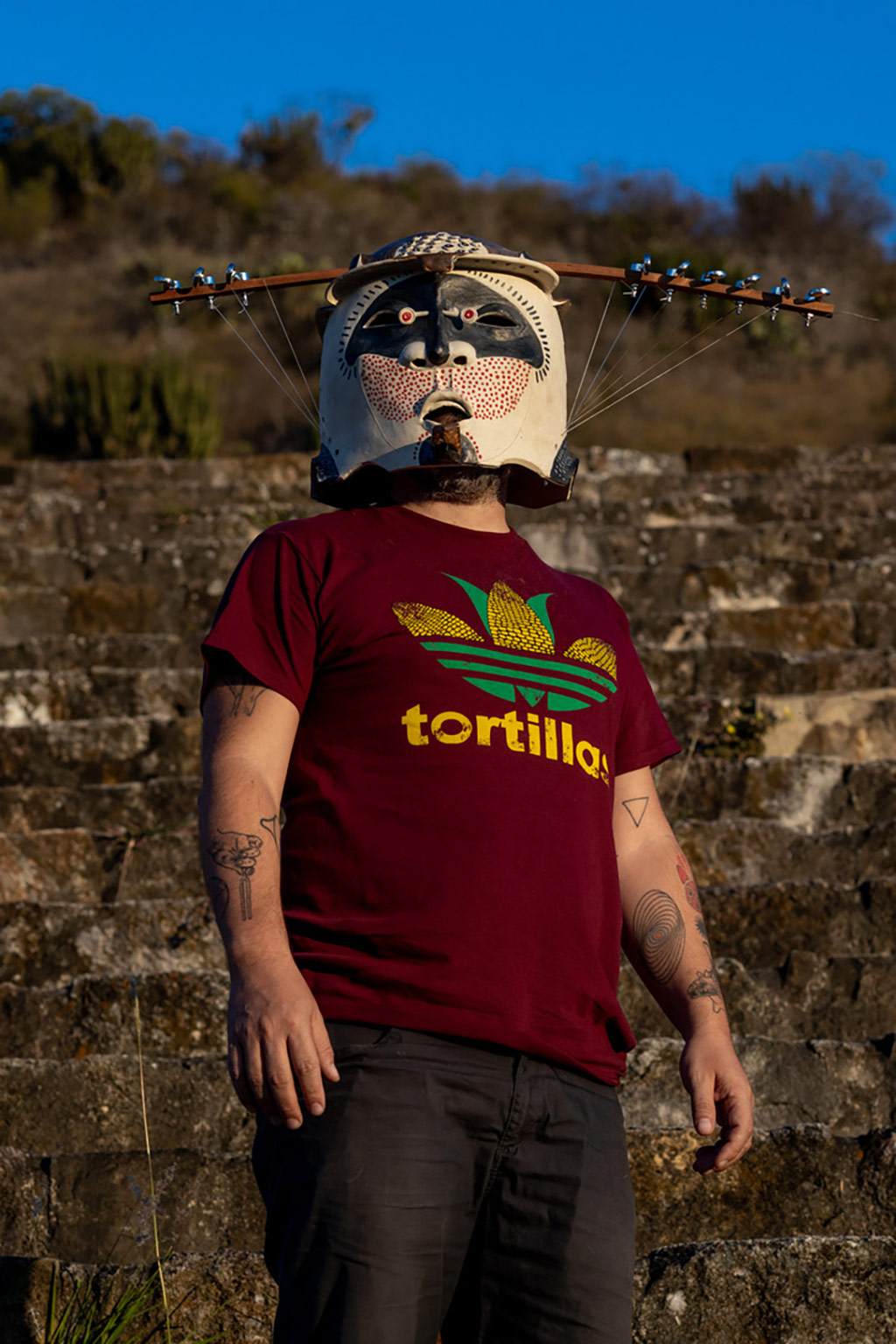
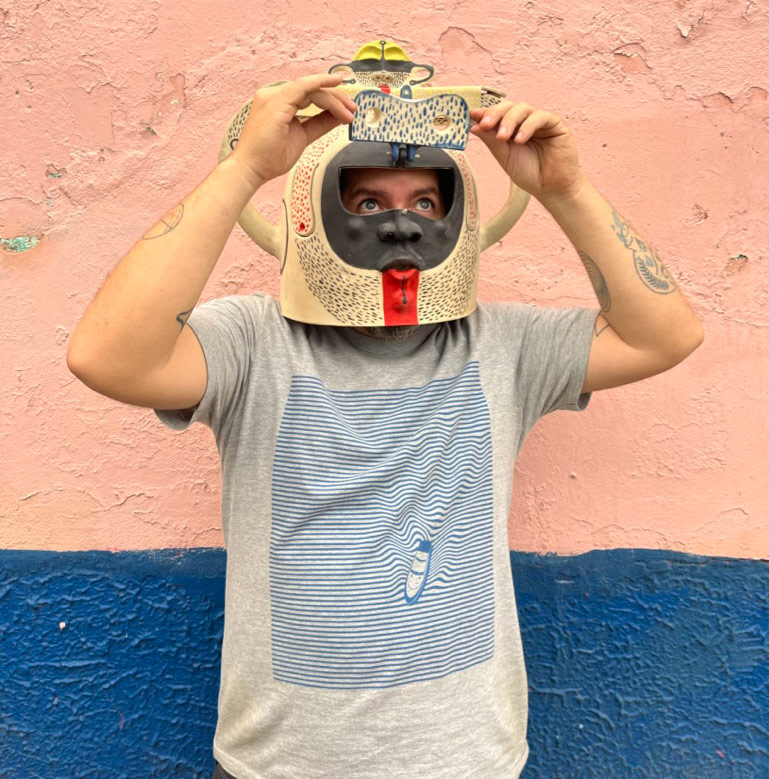
Such playfulness perhaps manifests most thoroughly in Vargas’ complex wearable sculpture pieces — large costume-like instruments that are mostly, or completely, made of ceramics. Two such pieces on display in Casa de Todas Partes include a massive sound helmet and a soundsuit. Striking as visual objects, they offer an audio-visual performative experience for those witnessing them in action — but perhaps more importantly, also provide an interactive, immersive sensory experience for the object-wearers.
“You put your head inside and directly experience sonic sensations inside,” Vargas explains, of the sound helmet.
As a sculpture, the sound helmet is giant, with the frets of a string instrument poking out from either side of it, as though the head were adorned with a musical set of antlers. The barrel-chested soundsuit, located in the studio right next to the sound helmet, is completely made of ceramic and incorporates a complex system of flutes within its body cavity.
Making objects that are interactive is done with clear intentions. Vargas stresses that one of the most important qualities of his work is its ability to facilitate exchange and interconnectedness.
In addition to making musical compositions by recording, sampling, and looping the ceramic instruments, Vargas also hosts performances of the objects in action. Likewise, with his work on display at Casa de Todas Partes, complete strangers are day-in, day-out invited to touch the ceramic instruments and understand how it is that the beautiful sculptural objects make their sonic magic.
“The interactivity, for me, is the most important thing [about the art],” says Vargas. “And the sacredness of the material.”
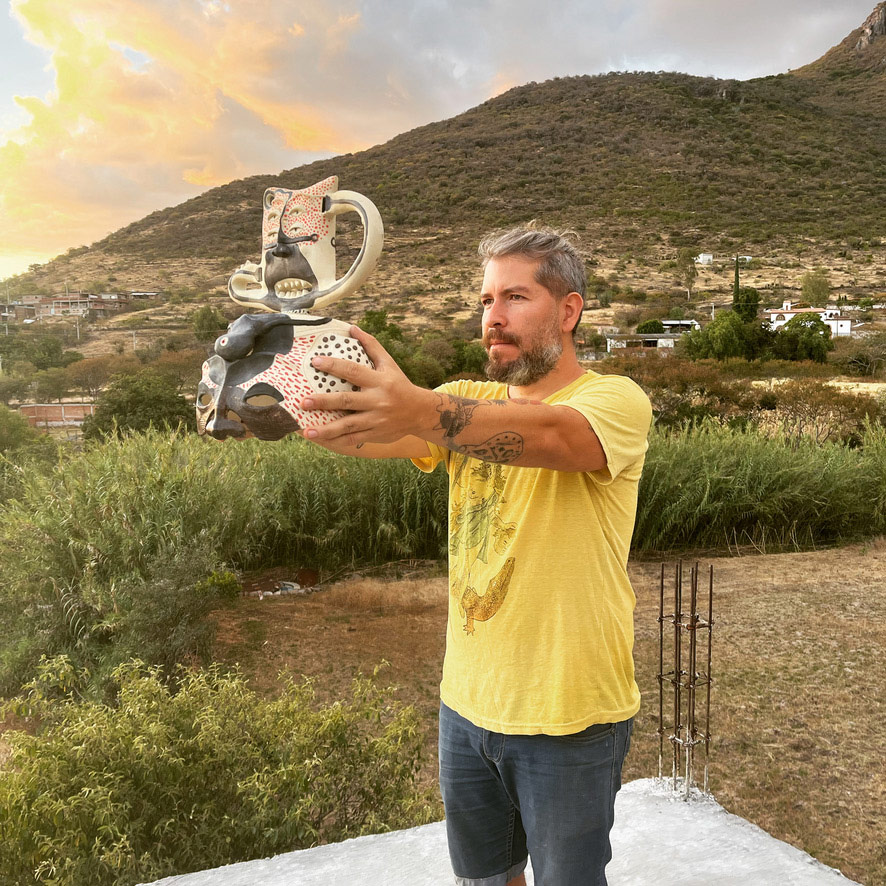
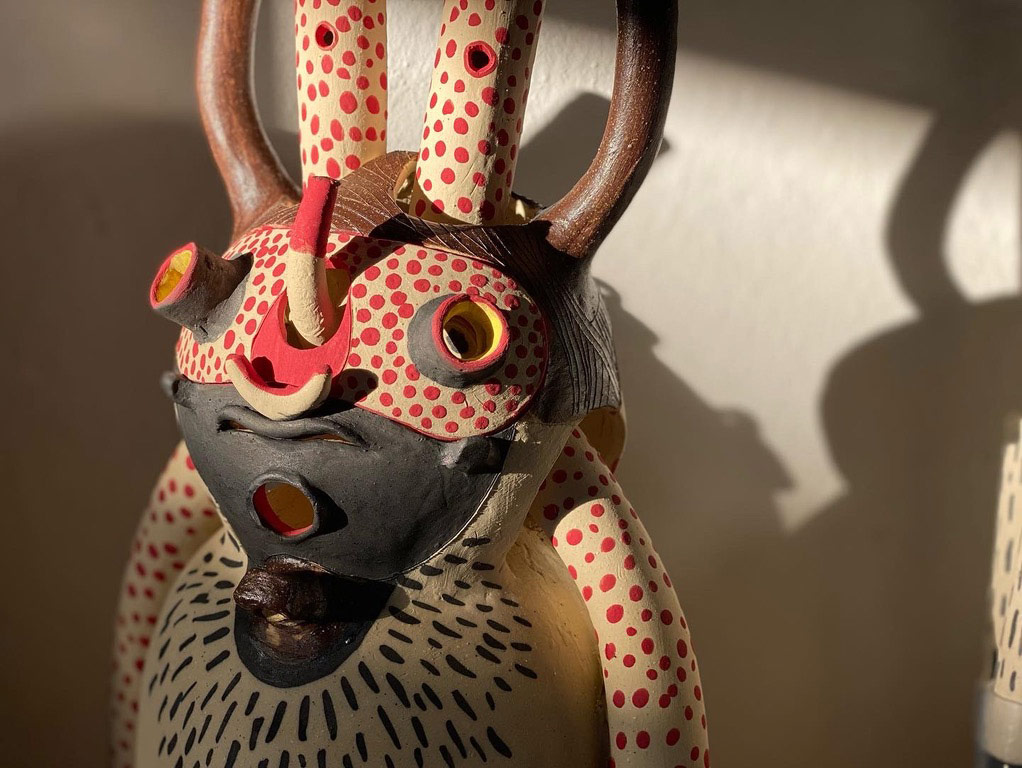
Learn more about Hernan Vargas at the following links:
- Barro Mare – Hernan Vargas’ work on Instagram
- Casa de Todas Partes – Collaborative arts studio in Oaxaca
Ω






